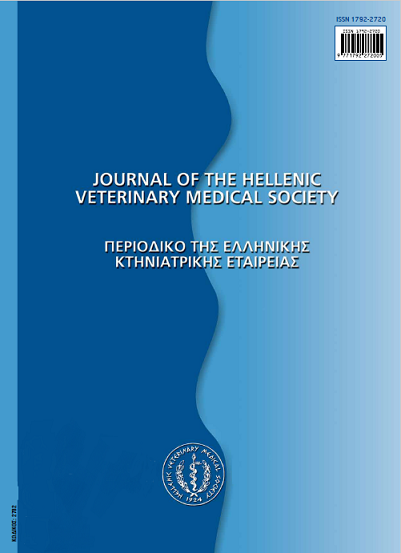Detection and analysis of new psittacine beak and feather disease virus (PBFDv) nucleotide sequences

Abstract
Psittacine beak and feather disease (PBFD) affects a large number of Psittaciformes species. In this study, five White Cockatoo parrots (Cacatua alba) with clinical signs of PBFD were examined. After euthanasia, a full necropsy of parrots was performed and organs with macroscopic changes were sampled for routine histopathological evaluation. To confirm the presence of psittacine beak and feather disease virus (PBFDv), feather samples were analyzed with the PCR method. Sequence analysis of the obtained PCR products indicated their close relationship (99%) to other PBFDv isolates. Six variable nucleotide sites were discovered, two missense and four silent mutations. This paper presents the evidence of new PBFDv sequence in Cockatoo species.
Article Details
- How to Cite
-
VUCICEVIC, M., VUCICEVIC, I., DAVITKOV, D., DAVITKOV, D., STEVANOVIC, J., RESANOVIC, R., & STANIMIROVIC, Z. (2018). Detection and analysis of new psittacine beak and feather disease virus (PBFDv) nucleotide sequences. Journal of the Hellenic Veterinary Medical Society, 68(4), 653–660. https://doi.org/10.12681/jhvms.16070
- Issue
- Vol. 68 No. 4 (2017)
- Section
- Research Articles

This work is licensed under a Creative Commons Attribution-NonCommercial 4.0 International License.
Authors who publish with this journal agree to the following terms:
· Authors retain copyright and grant the journal right of first publication with the work simultaneously licensed under a Creative Commons Attribution Non-Commercial License that allows others to share the work with an acknowledgement of the work's authorship and initial publication in this journal.
· Authors are able to enter into separate, additional contractual arrangements for the non-exclusive distribution of the journal's published version of the work (e.g. post it to an institutional repository or publish it in a book), with an acknowledgement of its initial publication in this journal.
· Authors are permitted and encouraged to post their work online (preferably in institutional repositories or on their website) prior to and during the submission process, as it can lead to productive exchanges, as well as earlier and greater citation of published work.


